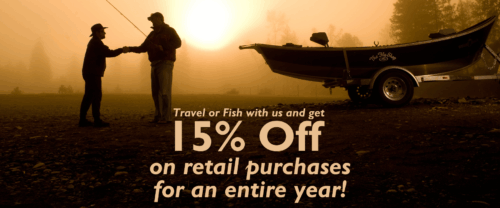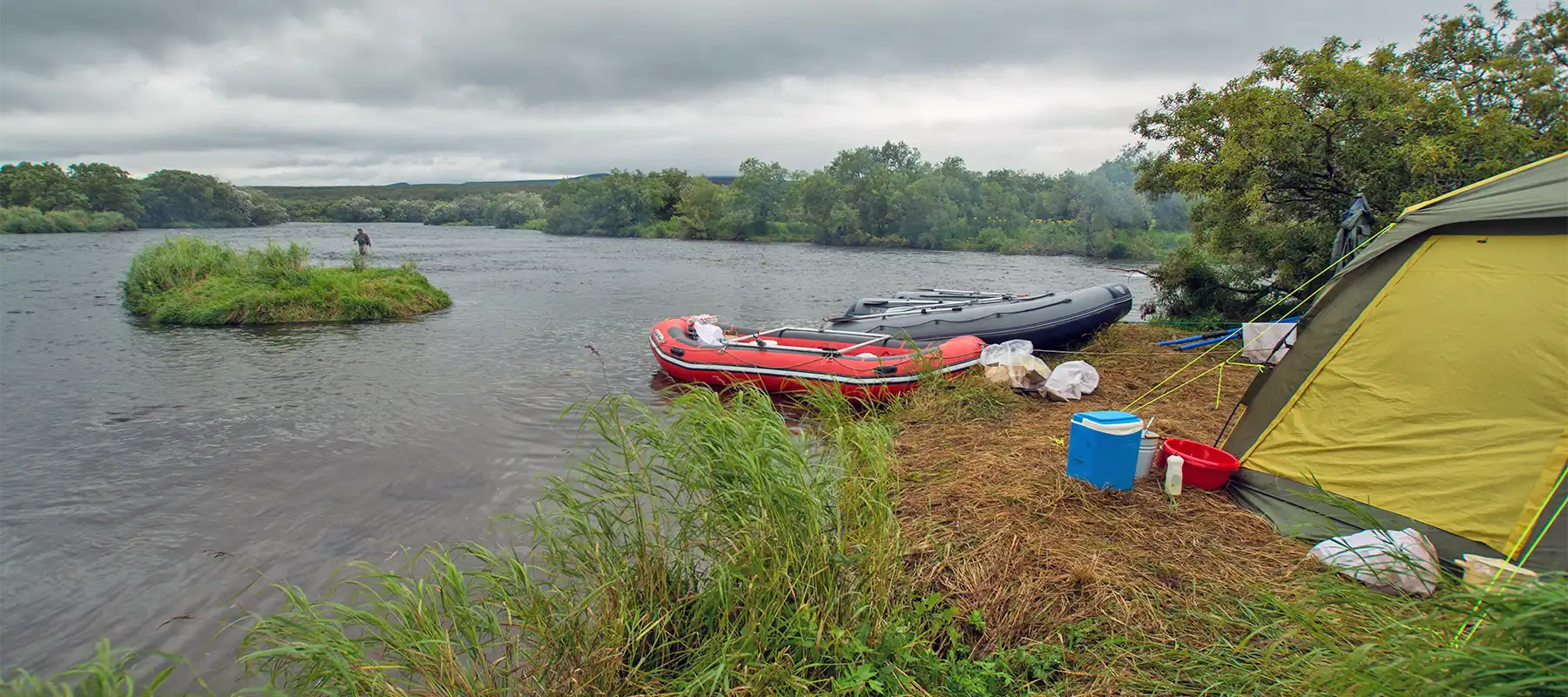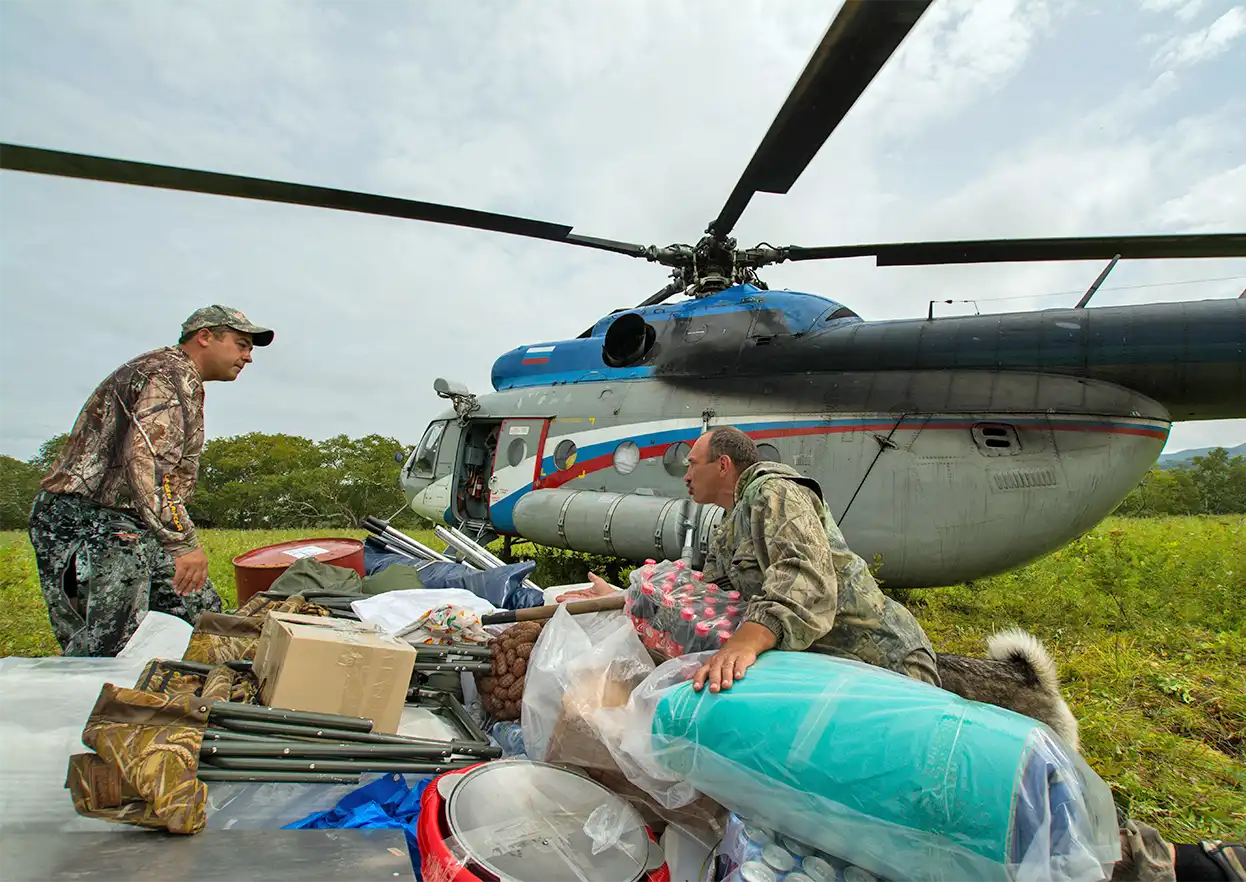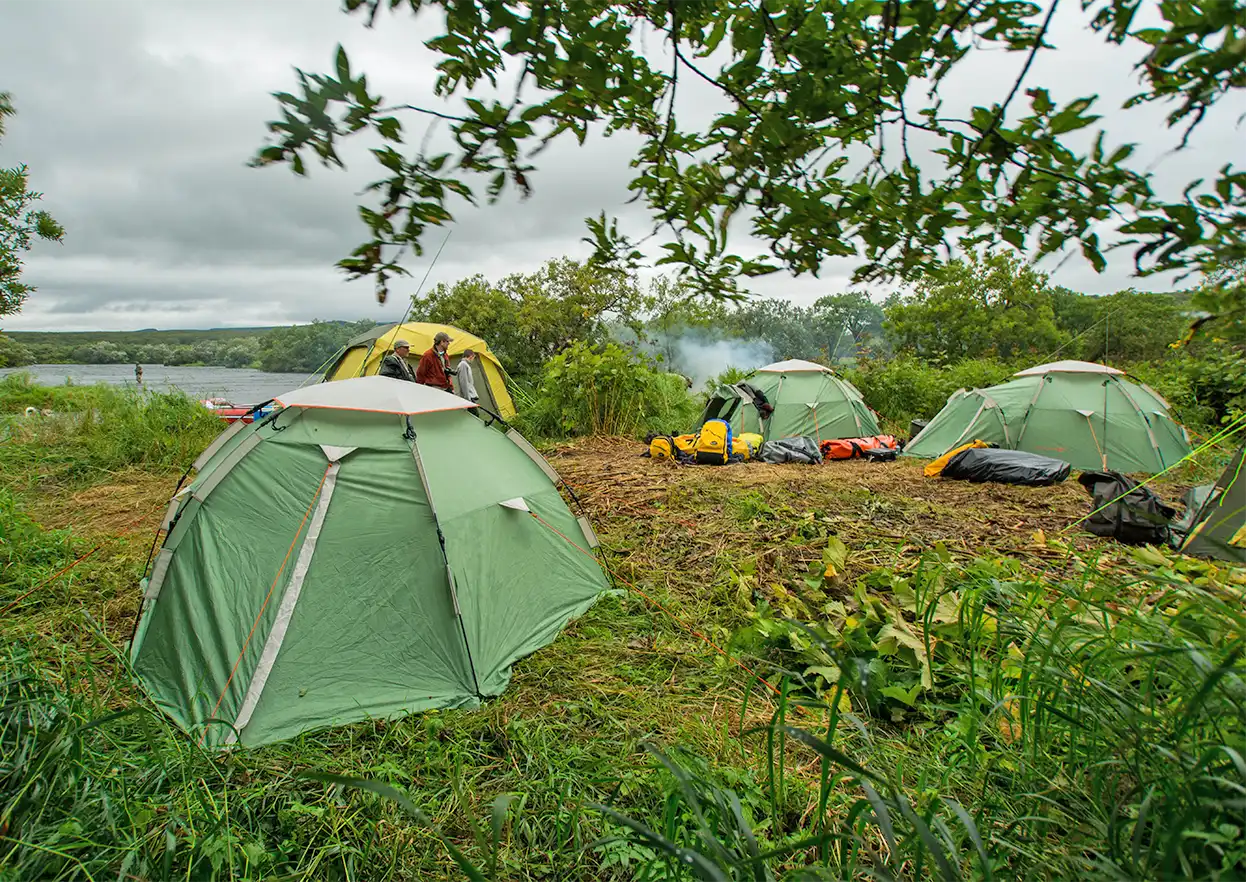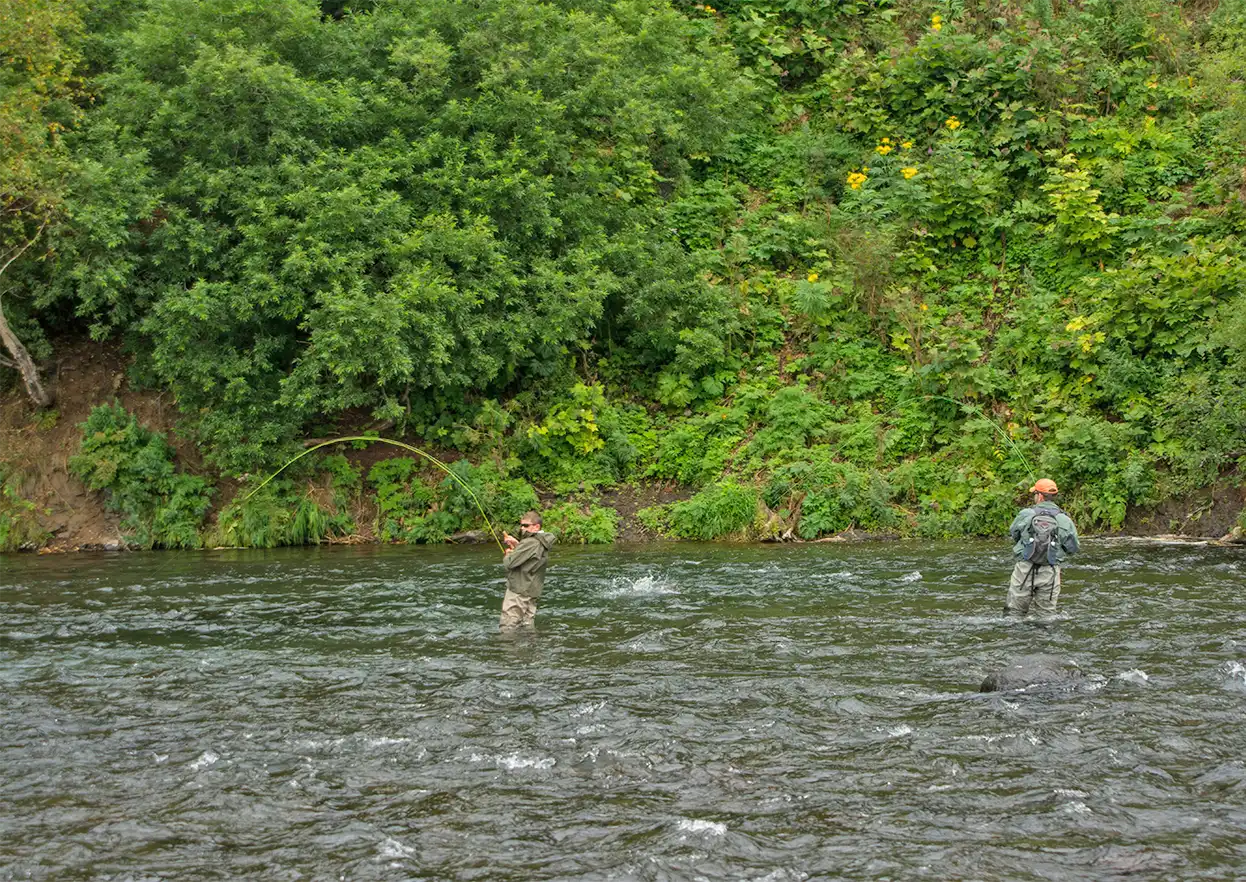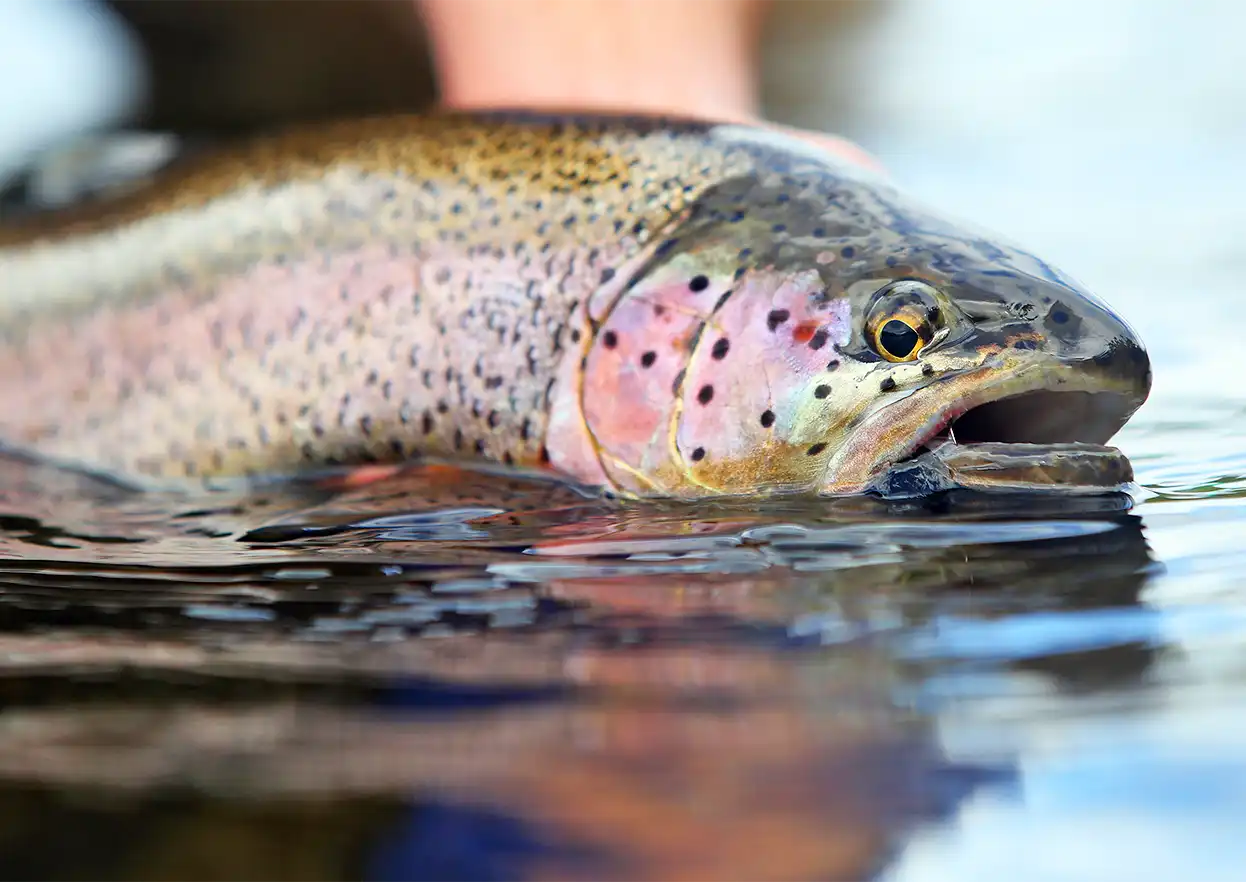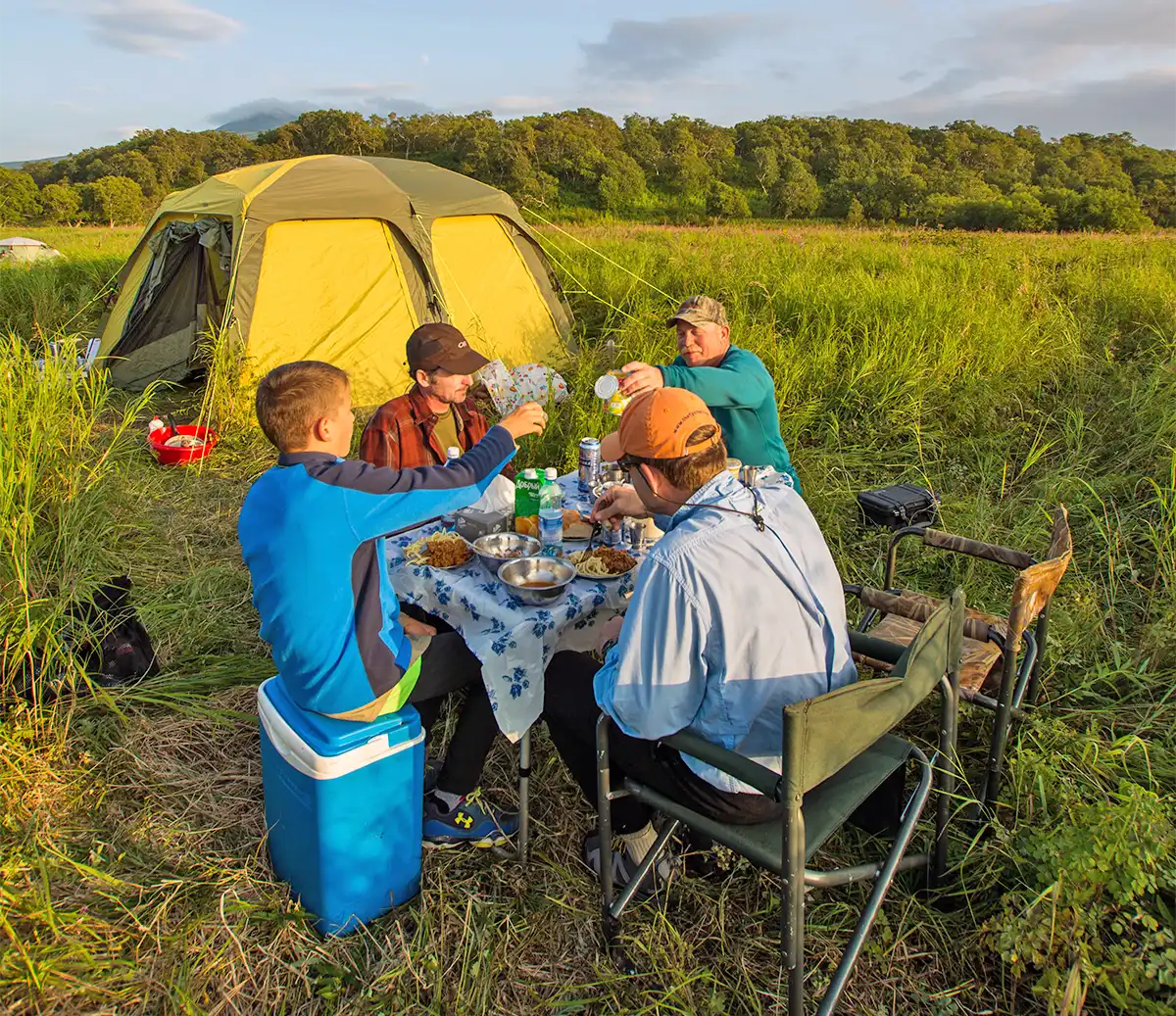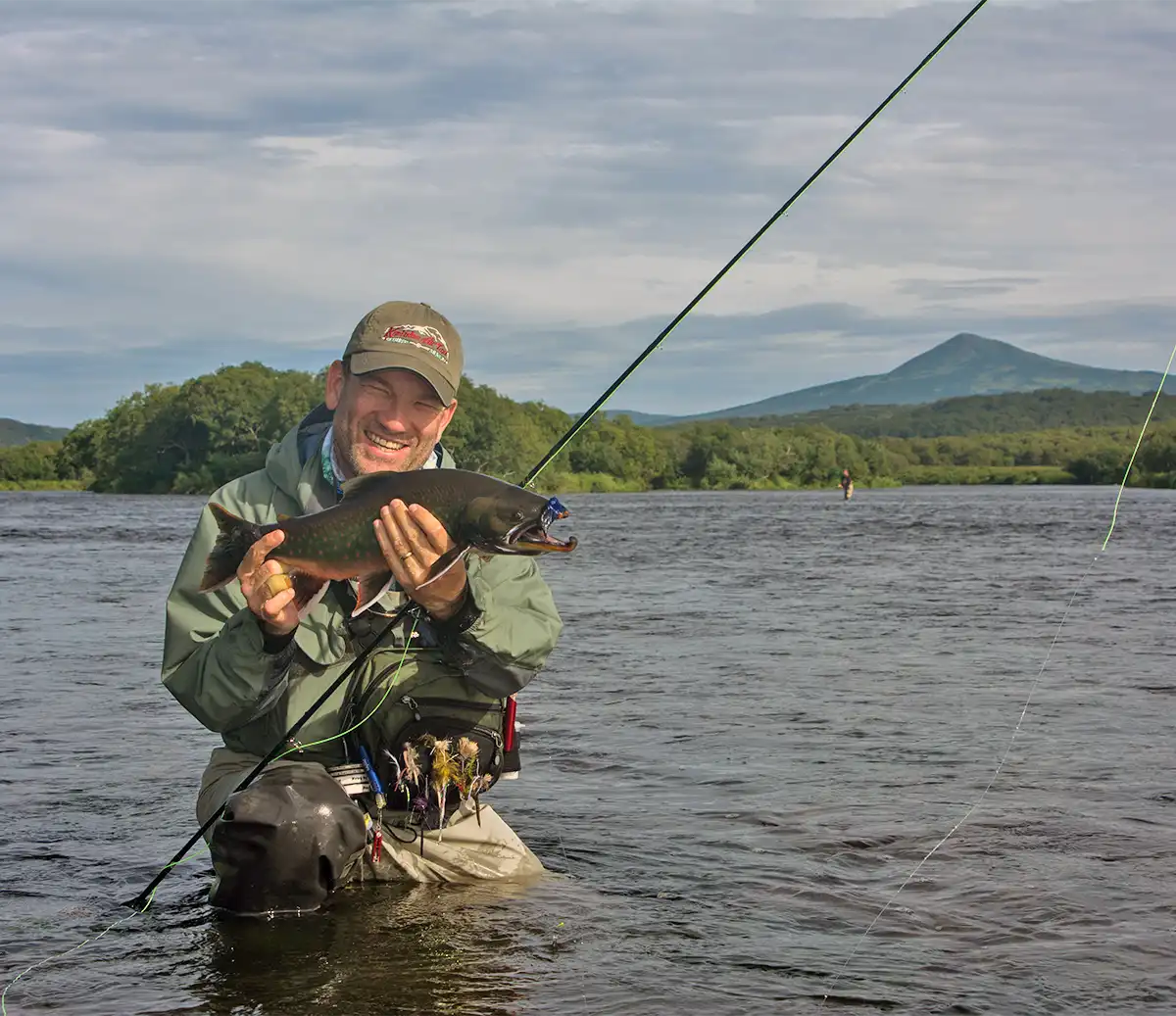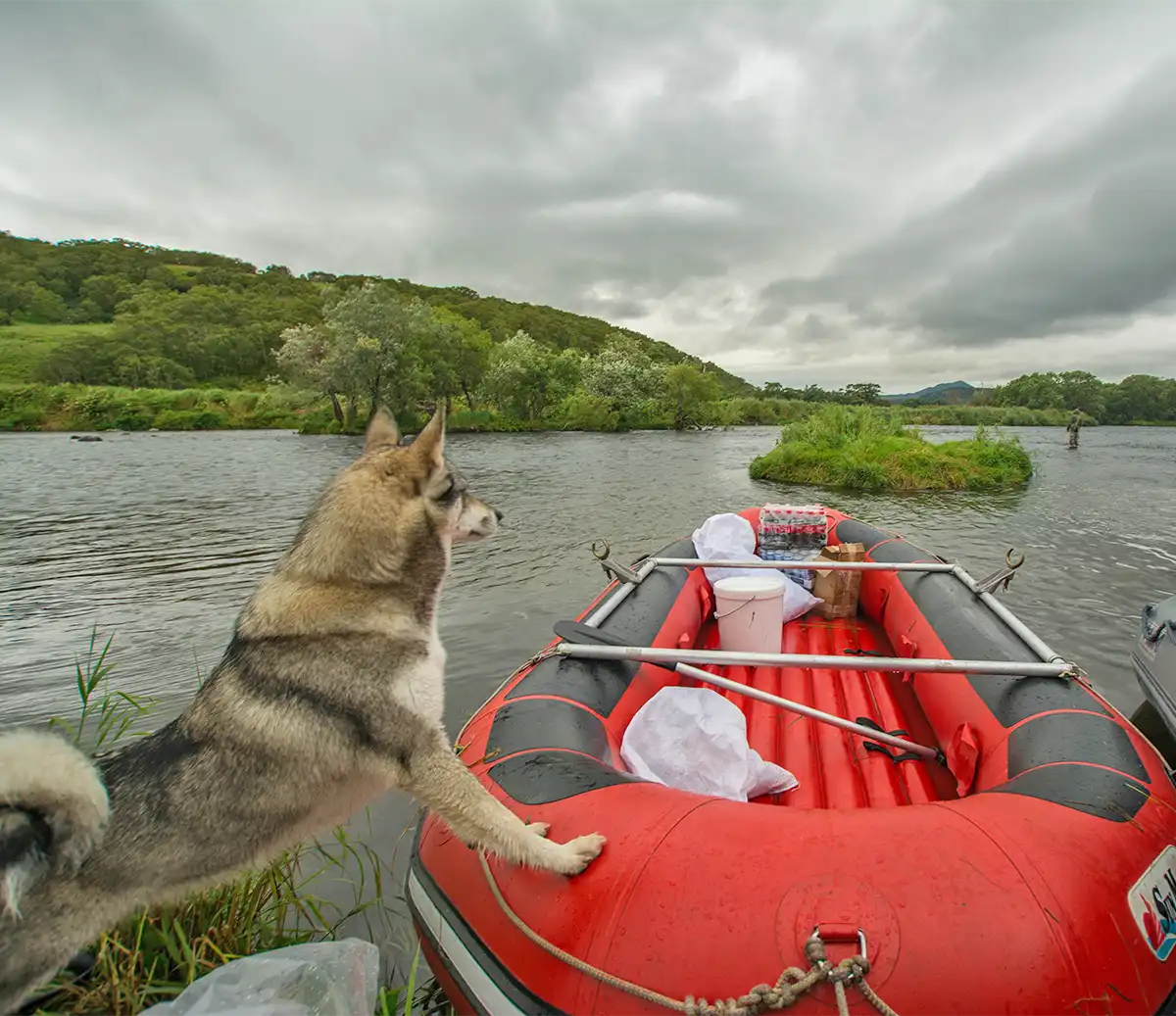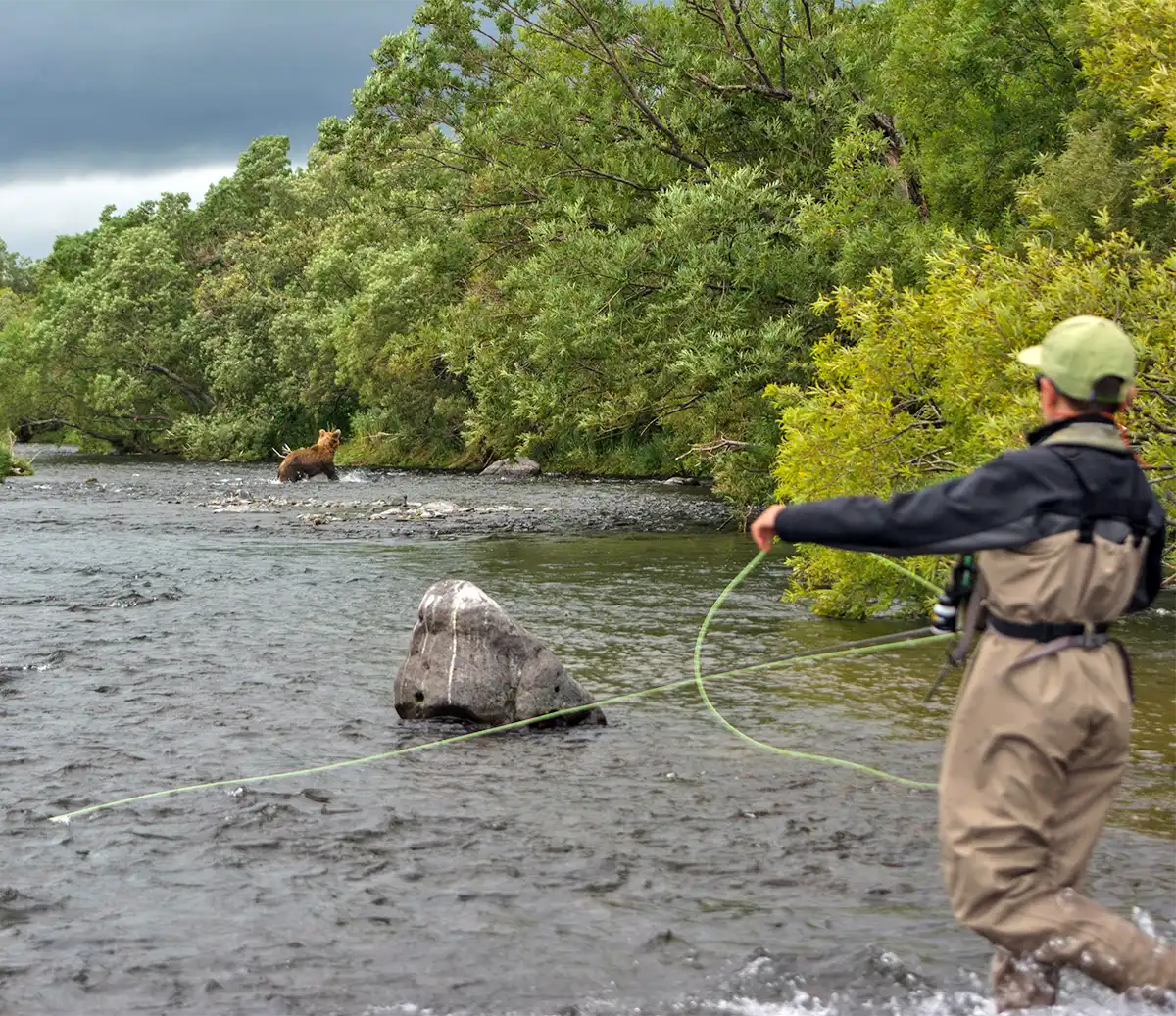There are a few different ways to get to Kamchatka, depending on the season.
Via Moscow or Seoul: There is a daily flight from Moscow that arrives at 10:00 am to Petropavlovsk, as well as a daily flight from Vladivostok (via Seoul) that arrives at 8:40 am. It may be possible to arrive the same day of your scheduled departure to the river, AS LONG AS YOU ARRIVE NO LATER THAN 10:00 AM.
However, we strongly recommend arriving a day early. This allows a chance to acclimate to the time change, so you’re not a vegetable when you arrive to the river. It also allows for any possible lost luggage or airline delays. If you miss the helicopter departure into camp, you will either miss your entire week of fishing or have to charter a very expensive extra helicopter flight into camp!
If you do plan on arriving a day early (recommended), please let us know as soon as you make your flight reservations so that we can work with our local partners in Kamchatka to arrange overnight lodging for you.
For overnights in Petropavlovsk, guests will typically be housed at one of our cozy guest houses in Yelisovo, or the Art Hotel near the airport. Nightly lodging fees (not included in your fishing package), range from $60-$100; guests are typically accommodated in double occupancy, but pending availability single rooms can sometimes be arranged by special request. The Fly Shop will make the reservations for you, and you will be able to settle up upon arrival.
Transfer to Camp:
All guests heading the Savan, Ichanga, or Southern Wilderness Floats will be met in the morning by Vadim at your place of lodging (they will communicate the time with you the night before), or at the airport if you are arriving that morning. They will ask for your passports to make copies to fill out the paperwork that will be required for departure from Russia at the end of your trip.
The first few hours in Kamchatka are always an exercise in patience. Understand that this is Russia, and communication from the helicopter companies is often lackluster at best. Keep in mind that the outfitters want you to get into camp as much as you do, and they are often at the whim of the helicopter companies. The helicopter companies don’t get paid unless they fly, so their priority, too, is to get you into camp… safely. Mornings in Petropavlovsk are frequently foggy, and the helicopters cannot fly until the fog clears. If the weather is clear in the morning, you will head straight to the heliport. If not, you will have the option to relax at Martha’s guest house, or walk to the nearby Old Castle Restaurant, which has very good food (and local draught beer, Kamchatksi #1). Lunch and/or drinks at the restaurant are not included in the package price, but typically range from $20-$30. They do not accept US dollars, but they do usually accept credit cards, or Martha and Vadim can exchange dollars for Rubles.
As soon as the fog lifts and the pilots give weather clearance, everyone will board the bus for the 30 minute drive to the heliport on the outskirts of Yelisovo. Once there, you will load your bags onto the Mi8 helicopter and lift off for BaseCamp. The helicopter flight from Yelisovo lasts for about 50 minutes, and is often one of many highlights from the trip. Sometimes head sets are provided, but this is Russia and you never know so it is recommended that you bring some earplugs for the noise of the rotors. The flight will take you over countless rivers and streams, and past several volcanoes.
Upon arrival at Base Camp – a hunting lodge nestled in a clearing a short stroll from the lower Savan River – guests will disembark the helicopter and unload all of their gear. Be sure to collect all of your bags and keep an eye on them, as the helicopter will quickly be reloaded with the equipment, gear, food, and luggage for the group heading to the left Savan float. That group, along with their guides and staff, will then re-board the helicopter to head into camp. 20 minutes later, the empty helicopter will return to base-camp to pick up the group, equipment, food, and luggage for the Ichanga group, then lift off again for the short, 10 minute flight upriver to the first camp on the Ichanga float.
As soon as you land and unload the helicopter, the crew will begin setting up camp while you can rig up your gear, don your waders, and start fishing! We recommend a mouse pattern to start with, but on both Ichanga and Savan almost anything works, including mice, streamers, and sometimes even traditional dry flies.
Lunch will be packed with you by the guides. A cook and camp assistant travel in a separate raft and do the large majority of “camp work.” Each pair of anglers are responsible for maintaining their own tent and inflatable sleeping mattresses. All camp equipment – except your sleeping bag - is provided as part of the trip.
Returning Home:
On the final morning, guests have time to dry clothes and waders, re-pack their bags, and prepare for the trip home. The guides and camp staff will break down camp and deflate the rafts to be ready for the helicopter, but if you want to fish this last day there is time in the morning for several more hours of fishing around camp. The head guide will also come around at this time to collect any gratuities you may wish to leave for the guides and staff for the week.
You will typically need to overnight in Yelisovo, as most of the departing flights through Moscow or Vladivostok/Seoul take off in the morning. There are some afternoon departures, but due to the un-predictable timing of the helicopter flights out of camp, the outfitters cannot guarantee they can get you back to town in time to catch those afternoon flights. The Fly Shop will help make these arrangements for you (not included in the package price), and you can settle up prior to departure at the hotel.
Vadim will meet you again and transfer you to the airport. If there is time, the bus can also take the group to a nearby store for souvenir shopping. Vadim will get everyone the departure paperwork at this time, which you will need to present along with your passport and visa at immigrations when departing Russia.
